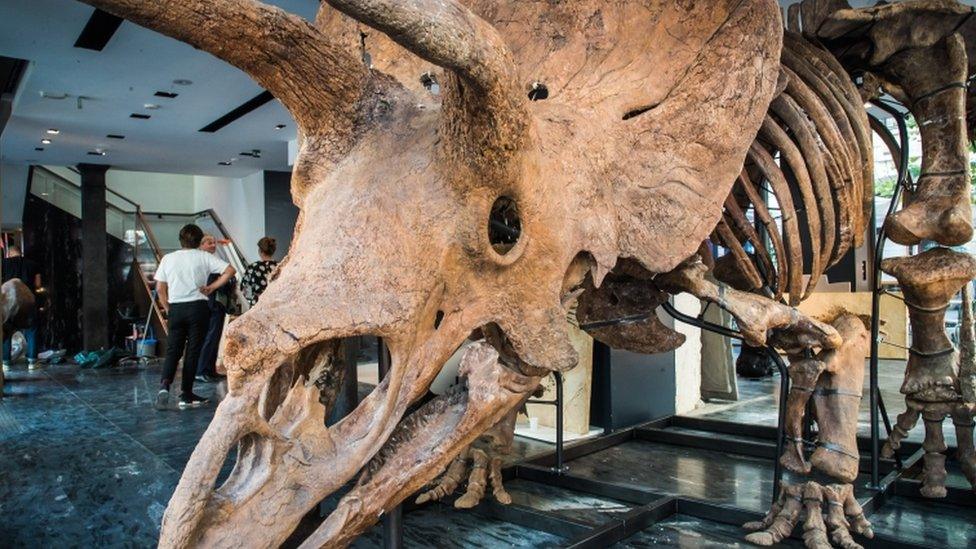'Oldest EVER' dinosaur fossil found in Brazil

Herrerasaurus skeleton, similar to the fossils found in Brazil
- Published
A 233-million-year-old dinosaur fossil, thought to be the oldest ever discovered, has been unearthed in Brazil.
And all because of torrential rain!
The heavy rain eroded parts of a known fossil site, revealing the dinosaur's fossilised skeleton.
The 'almost fully preserved" dinosaur fossil was discovered next to a reservoir in the state of Rio Grande do Sul in southern Brazil.
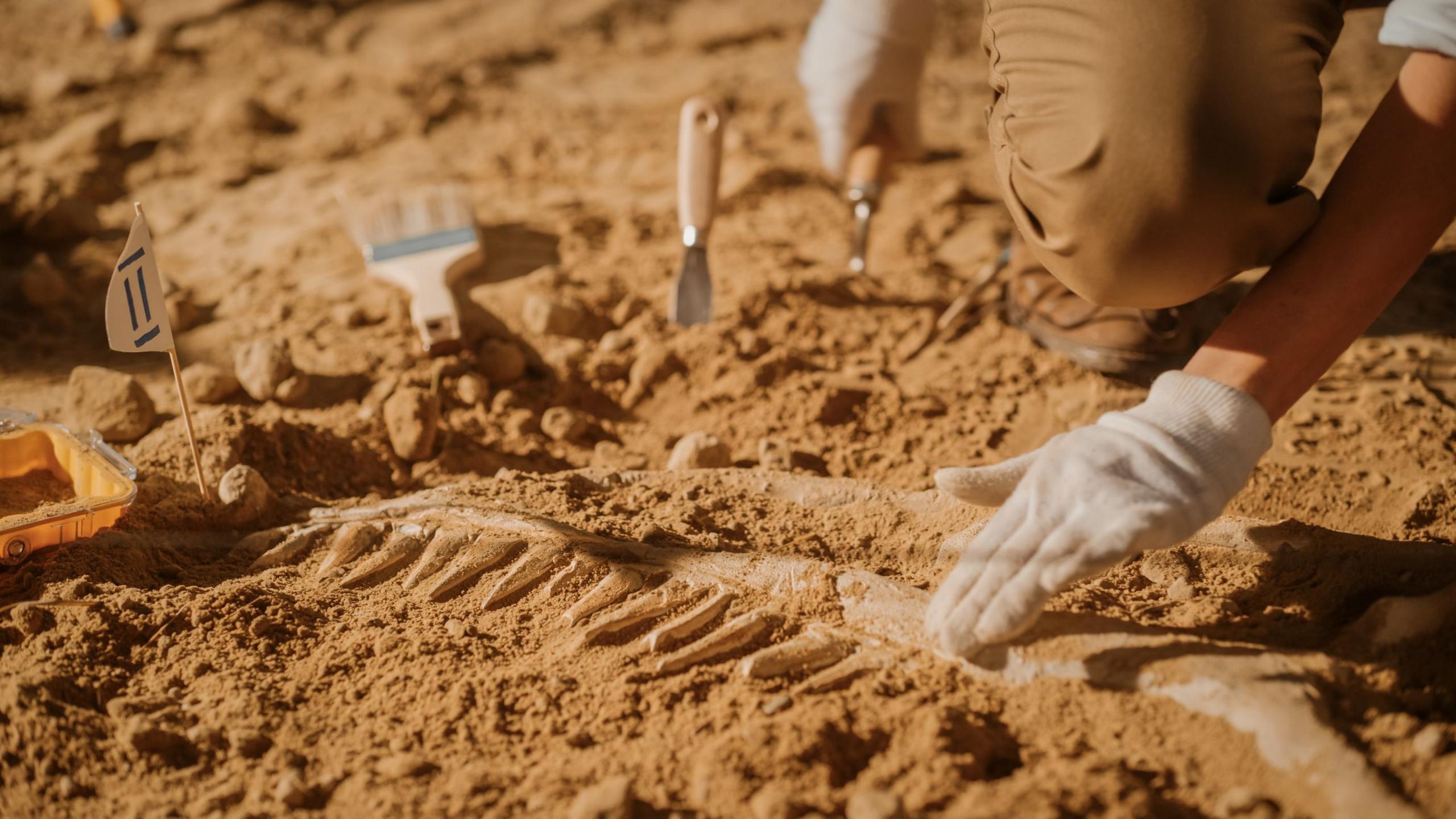
Palaeontologists have to work very carefully when discovering fossils
Read more:
Has Europe's biggest EVER dinosaur been found in the UK?!
- Published10 June 2022
Gigantic new dino species discovered in Spain!
- Published10 February 2022
Schoolgirl discovers fossil of huge prehistoric sea reptile
- Published18 April 2024
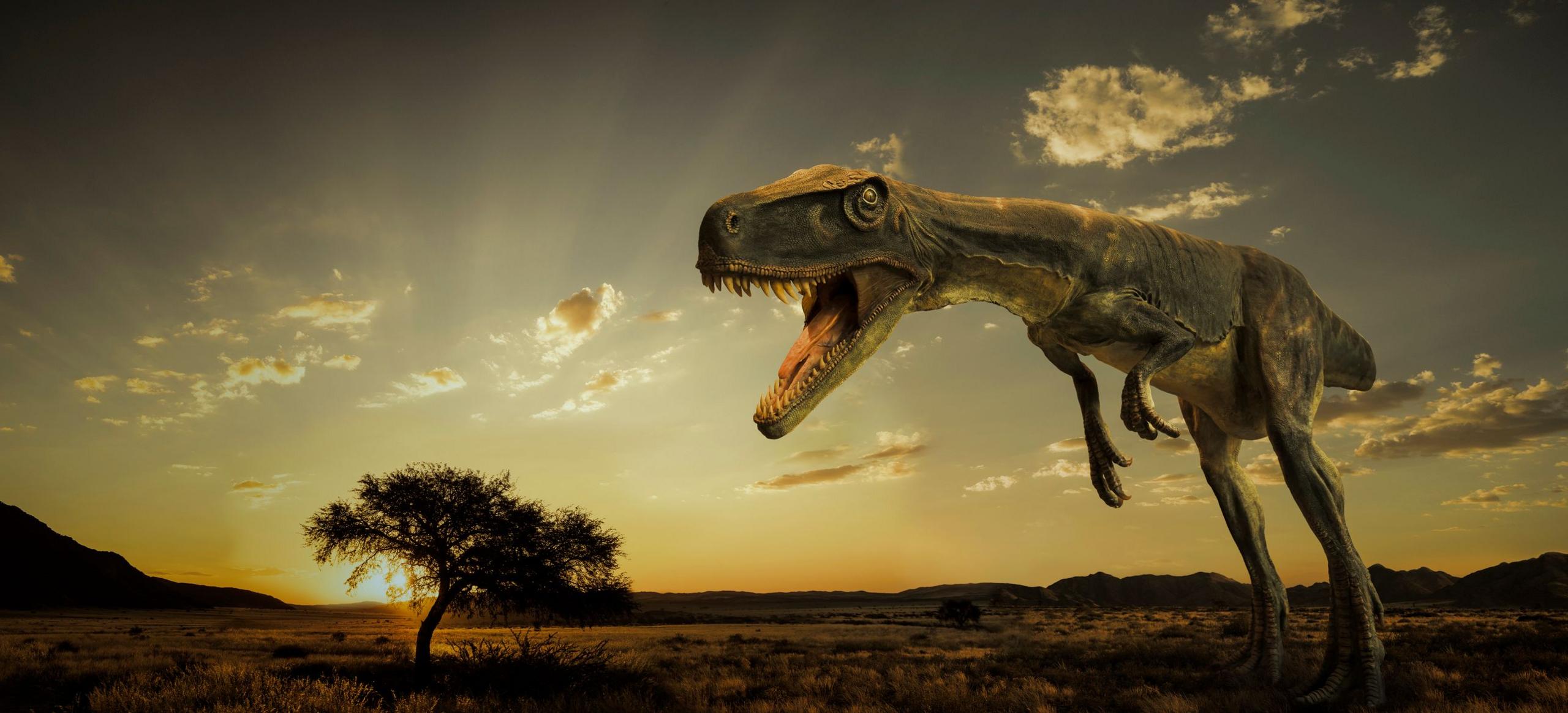
Herrerasaurus was one of the earliest dinosaurs. Its name means "Herrera's lizard", after the rancher who discovered the first specimen
Scientists think the animal lived during a time known as the Triassic period - when all of Earth's continents were a single mass of land called Pangea.
This period lasted 50.5 million years and it was during this time that dinosaurs emerged.
Researchers believe that the fossil belongs to a member of the Herrerasauridae family of carnivorous dinosaurs.
These dinosaurs grew to about 2.5m in length, and had two-legs.
“It’s among the oldest in the world,” Rodrigo Müller from the Federal University of Santa Maria told Brazilian media.
“It’s already important because of the role it’s likely to play in helping us understand the origin of the dinosaurs,” Dr Müller added.
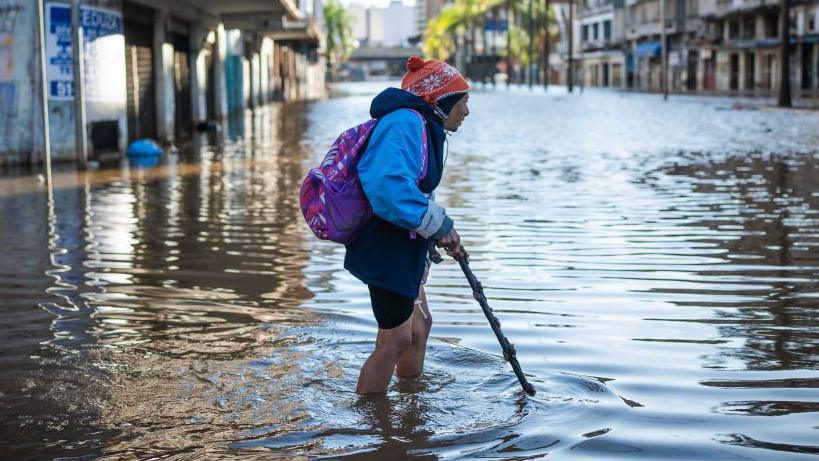
Rio Grande do Sul has received a lot of rain over the last few months
Brazil has received a lot of rain over the last few months.
In June, the state of Rio Grande do Sul, where the fossil was uncovered, received three months worth of rain in just two-weeks.
Palaeontologists - who study dinosaurs - are now racing against time to unearth the remaining fossils in the region as, now they're uncovered, more heavy rain could destroy them.
A “leg bone and a pelvis bone” discovered at the site have already been destroyed by the floods.
Let's hope they manage to get the remaining fossils out soon!
Check these stories out:
- Published5 August 2024

- Published13 September 2021
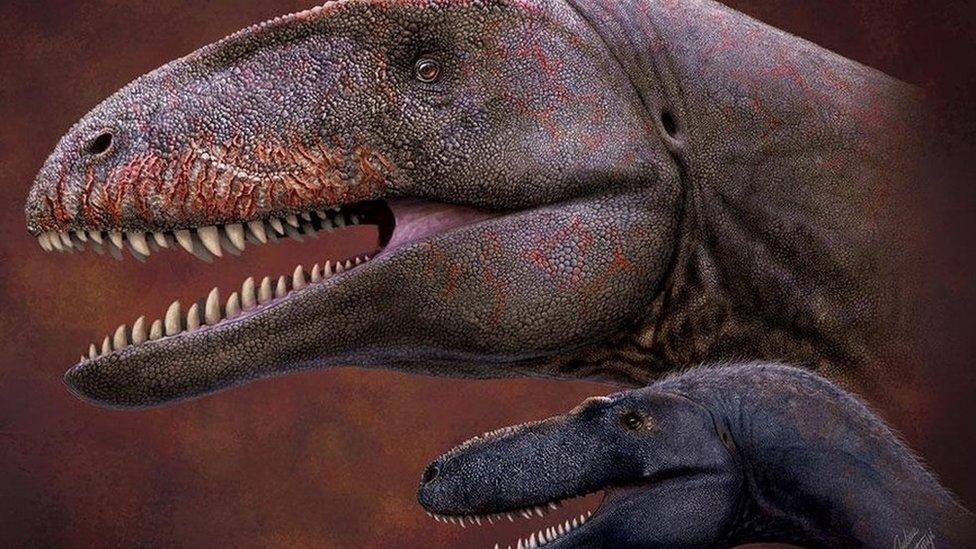
- Published3 September 2021
